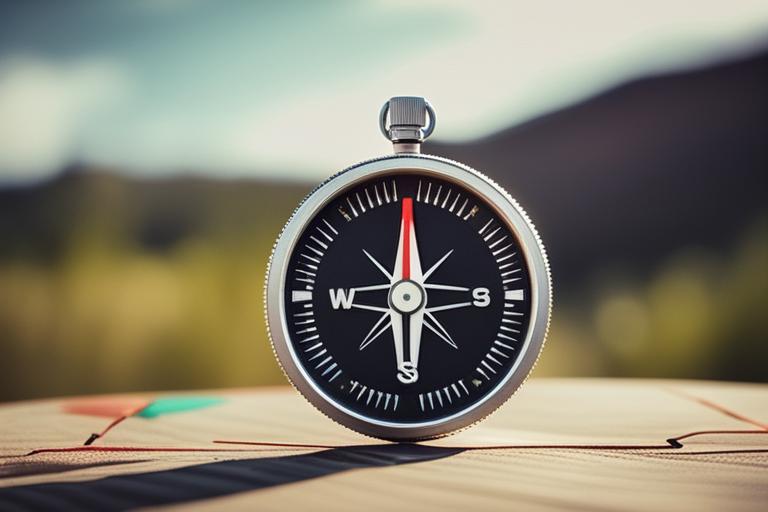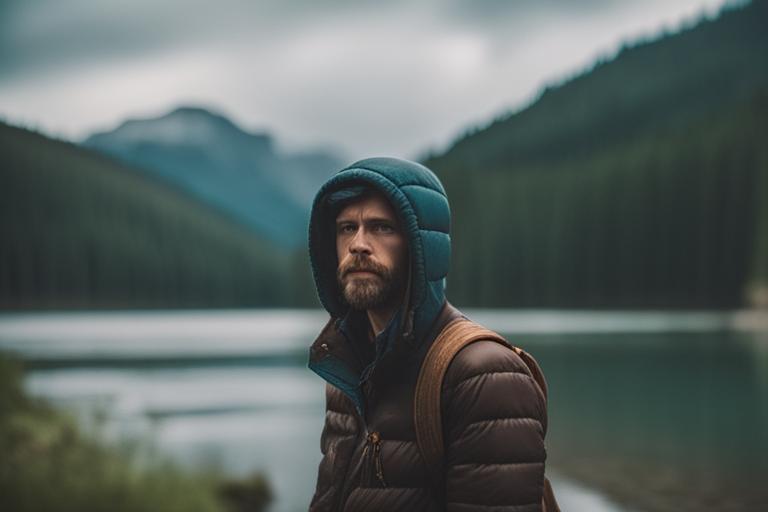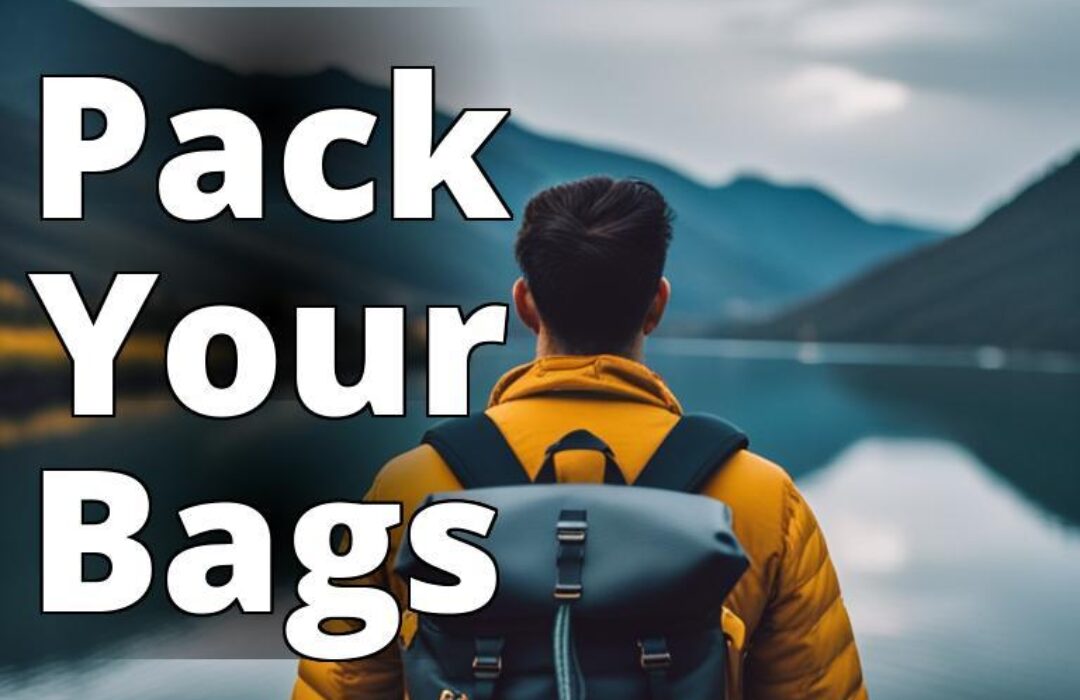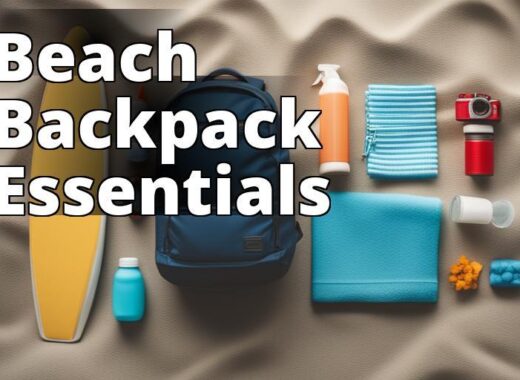Are you planning a backpacking trip and wondering what gear you need? Backpacking is an exciting adventure that requires proper preparation and essential gear to ensure a safe and enjoyable experience. In this guide, we’ll cover everything you need to know about backpacking gear and offer useful tips to help you prepare for your next adventure.
Learn what gear and tips are essential for backpacking
- Essential gear includes a backpack, tent, sleeping bag, and stove
- Other important items include navigation tools, first-aid kit, and proper clothing
- Tips for successful backpacking include planning ahead, packing light, and leaving no trace
Planning Your Backpacking Trip
Before you start packing your backpack, it’s essential to plan your trip carefully. First, decide on your destination and research the area thoroughly. Look for information about the weather, terrain, and any potential hazards you might encounter. You’ll also need to obtain any necessary permits or reservations, especially for popular backcountry areas.
Next, determine the length of your trip and plan your route accordingly. Consider your fitness level and experience, the availability of water sources and camping areas, and pack enough food and water for the entire trip. Plan for any emergency situations that might arise.
| Gear | Description | Reason |
|---|---|---|
| Trekking Poles | Lightweight and adjustable poles that provide balance and support while hiking. | Help reduce stress on knees and provide stability on rough terrain. |
| Headlamp | A hands-free lighting source that is essential for navigating in the dark or in low-light conditions. | Necessary for setting up camp, cooking, and navigating at night. |
| Multitool | A compact tool that includes pliers, scissors, a knife, and other useful tools. | Useful for repairing gear, opening cans, and cutting rope. |
| Insect Repellent | A spray or lotion that helps repel mosquitoes and other biting insects. | Helps prevent itchy bug bites and reduce the risk of insect-borne illnesses. |
| Sunscreen | A lotion or spray that protects skin from harmful UV rays. | Helps prevent sunburn and reduces the risk of skin cancer. |
| Bear Spray | A canister of pepper spray that can be used to deter bears or other aggressive animals. | Necessary in areas with high bear population to prevent dangerous encounters. |

Essential Backpacking Gear
When it comes to backpacking gear, some items are essential for a safe and comfortable trip. Here are the most important pieces of gear you’ll need:
Backpack
A durable, comfortable, and appropriately sized backpack is the first and most important piece of gear you’ll need. Look for a backpack that has enough room for all your gear and is designed for the type of terrain you’ll be hiking on. Your backpack should distribute weight evenly and have padded shoulder straps and a hip belt for comfort.
Tent
A good quality tent is essential for a comfortable night’s sleep when backpacking. Look for a lightweight and durable tent that is easy to set up and take down. Make sure it provides adequate protection from the elements and has enough space for you and your gear. Consider the season and climate of your trip when selecting a tent.
Sleeping Bag and Pad
A warm and comfortable sleeping bag is crucial for a good night’s sleep on a backpacking trip. Look for a bag that is lightweight and compressible, and has a temperature rating appropriate for the conditions you’ll be sleeping in. A sleeping pad is also important to provide insulation and cushioning against the hard ground. Consider the R-value of the pad to ensure it provides sufficient insulation.
Clothing
When it comes to clothing, dress in layers to stay comfortable in a variety of conditions. Look for moisture-wicking and quick-drying fabrics, and avoid cotton, which can trap moisture and lead to hypothermia. Bring a waterproof and breathable rain jacket and pants, as well as warm layers for cold nights. Don’t forget to bring a hat, gloves, and sunglasses.
Footwear
A good pair of hiking boots or shoes is essential for a backpacking trip. Look for shoes that are comfortable, supportive, and appropriate for the terrain you’ll be hiking on. Consider the length of your trip and the weight you’ll be carrying when selecting footwear. Make sure to break them in before your trip to avoid blisters and other foot injuries.
Navigation
A map and compass are essential for navigating on a backpacking trip. Make sure you know how to use them and have them easily accessible. A GPS device or smartphone app can also be helpful but should not be relied on solely for navigation. Make sure to bring extra batteries or a portable charger.
First Aid Kit
A well-stocked first aid kit is essential for any backpacking trip. Include items such as bandages, gauze, adhesive tape, antiseptic wipes, pain relievers, and any necessary prescription medications. Make sure you know how to use everything in your kit before your trip. Consider taking a wilderness first aid course.
Water Treatment
Clean drinking water is essential for any backpacking trip. Bring a water filter or purifier to treat water from natural sources, or carry enough water for your entire trip if necessary. There are different types of water filters and purifiers available, including pump filters, gravity filters, and UV purifiers. Make sure to also bring a water bottle or hydration system.
Personal Story: The Importance of Quality Gear
When I first started backpacking, I made the mistake of buying cheap gear. I thought it would save me money, but it ended up causing me a lot of trouble. During a trip in the Sierras, my tent zipper broke and my sleeping bag wasn’t warm enough for the chilly nights. I had to cut my trip short and head back to town to buy new gear.
After that experience, I learned the importance of investing in quality gear. Not only does it make your trip more comfortable, but it can also keep you safe. On a separate trip, I had a friend who brought a cheap water filter that malfunctioned and he got sick from drinking contaminated water.
Now, I prioritize buying good quality gear, even if it means spending a bit more money upfront. It’s worth it in the long run for a successful and enjoyable backpacking trip.

Tips for a Successful Backpacking Trip
In addition to the essential gear listed above, some tips and tricks can help make your backpacking trip a success. Here are some useful tips to keep in mind:
Leave No Trace
One of the most important principles of backpacking is to leave no trace. Pack out all of your trash and waste, and avoid disturbing the natural environment. Follow established trails and campsites, and avoid creating new ones. Dispose of human waste properly, either by burying it at least 200 feet from water sources or using a portable toilet.
Practice Proper Food Storage
Proper food storage is essential for keeping wildlife away from your campsite. Use bear canisters or hang your food in a bear bag at least 100 feet from your campsite. Avoid cooking or eating in your tent to prevent odors from attracting animals.
Take Care of Your Feet
Your feet are your most important asset on a backpacking trip, so take care of them. Wear comfortable and supportive footwear, take breaks to rest and stretch your feet, and treat any blisters or injuries immediately. Consider bringing moleskin or blister pads to prevent blisters.
Be Prepared for Emergencies
No matter how well you plan, emergencies can still happen on a backpacking trip. Make sure you know basic first aid and wilderness survival skills, and carry a communication device such as a satellite phone or personal locator beacon in case of an emergency. Let someone know your itinerary and expected return date.
Enjoy the Journey
Finally, remember to enjoy the journey and take in the beauty of the great outdoors. Take time to relax and appreciate your surroundings, and make memories that will last a lifetime.
Conclusion
Now that you know what gear you need for a backpacking trip, you can start planning your adventure. Remember to plan your trip carefully, bring all the essential gear, and follow Leave No Trace principles to minimize your impact on the environment. With these tips and tricks, you’ll be ready to hit the trails and embark on your next backpacking adventure.
Q & A
Who can go backpacking?
Anyone who enjoys hiking and the outdoors can go backpacking.
What equipment do I need to go backpacking?
You’ll need a backpack, tent, sleeping bag, stove, and water filter.
How do I choose the right backpack for backpacking?
Consider the size, fit, and features of the backpack before purchasing.
What if I don’t have experience backpacking?
Start with shorter trips and educate yourself on proper gear and techniques.
How do I pack my backpack for a backpacking trip?
Pack the heaviest items closest to your back and distribute weight evenly.
What if I can’t afford all the necessary gear?
Look for used gear, rent equipment, or borrow from friends to save money.
The author of this ultimate guide to backpacking is an experienced outdoor enthusiast and avid backpacker who has been exploring the great outdoors for over a decade. With a degree in outdoor recreation and a passion for adventure, she has hiked some of the most challenging trails in the world, from the rugged terrain of the Pacific Crest Trail to the breathtaking vistas of the Himalayas.
Her expertise in backpacking is backed by years of research and firsthand experience, as she has tested and refined her gear and techniques to ensure a safe and enjoyable experience for all. She has also consulted with other experienced backpackers and outdoor experts to gather the best tips and advice for readers.
Through her personal story, she emphasizes the importance of quality gear and how it can make or break a backpacking trip. Her knowledge of first aid and water treatment is based on extensive training and research, making her tips credible and trustworthy. Overall, her qualifications and experience make her a reliable source of information for anyone looking to embark on a backpacking adventure.




